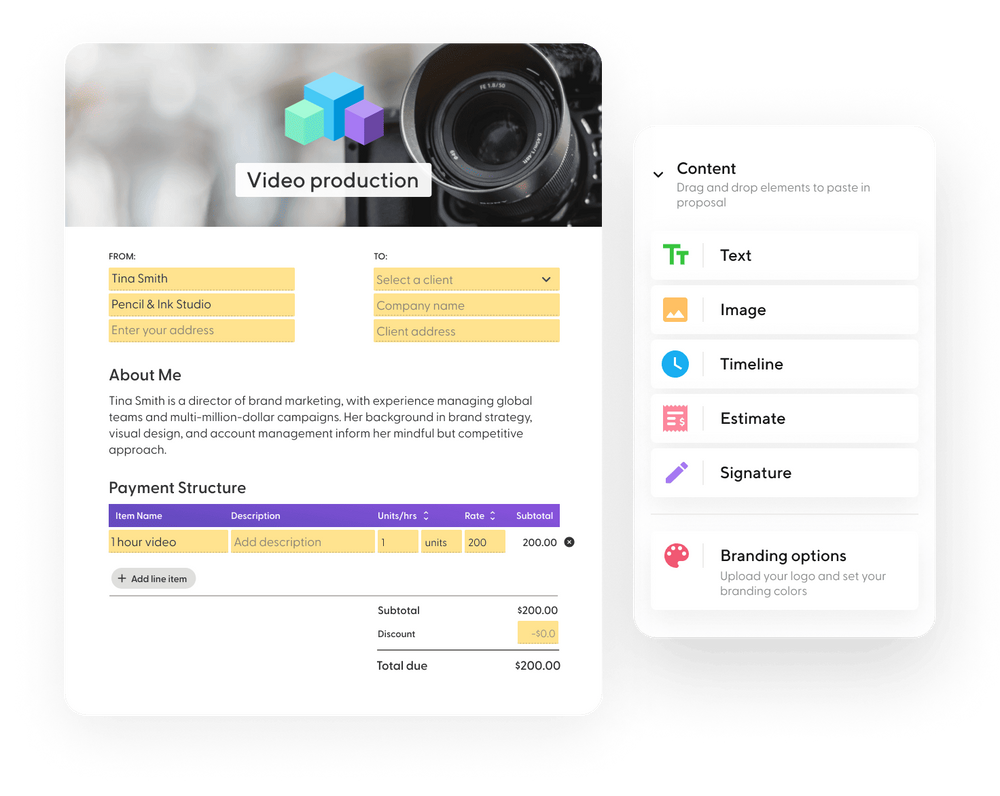In this day and age, finding clients is almost as difficult as keeping great clients aboard. The last thing you want to do is lose a customer once you've integrated them into your platform. That's why client retention is a crucial key performance indicator (KPI).
In this blog, we’ll uncover the secrets to success when it comes to retaining clients and unlocking the potential of your business.
What is customer retention?
Customer retention is the process of keeping existing customers or clients coming back to your business. It is an important part of any business, as it helps build relationships with customers, increases brand loyalty, and helps your business grow. It is essential to understand the concept of client retention to remain competitive in the market.
It’s important to note that there is a difference between customer acquisition and customer retention. Customer acquisition is the process of bringing in new customers, while customer retention focuses on keeping existing customers engaged and loyal.
Customer retention involves more than just customer service. It is also about understanding customer needs, building relationships, offering incentives, promoting customer service excellence, and utilizing digital marketing tactics. Customer retention is essentially when a business can keep a customer for a long time, often through loyalty programs, rewards, or discounts.
Retaining customers means not only attracting new clients but also keeping existing customers engaged and satisfied. A successful customer retention strategy ensures that businesses can increase their customer base and build long-term relationships with their clients.
It’s important to focus on retaining customers because it helps businesses develop a loyal customer base and increase revenue over time. Retaining customers also helps businesses build trust with their customers and establish a reputation as a reliable business.

Benefits of retaining clients
Retaining clients can have numerous benefits for your business. Here are just a few of the key benefits of retaining clients:
- Increased customer loyalty and satisfaction
- Long-term customer relationships
- Increased word-of-mouth marketing
- Reduced customer acquisition costs
- Increased revenue and profits
- Improved customer service
These are just a few of the benefits of client retention. So, why is client retention important? Because it will increase the number of customers acquired while also increasing the number of customers who have already bought something from you.
How to retain customers - customer retention strategies
In this competitive market, it is not enough to just have great services or goods. You also need to try to go above and beyond for your repeat customers to improve customer retention and make sure that they stay loyal to you and your brand.
For that reason, we've compiled some retention strategies that work if implemented correctly.
1. Understanding client needs
The first step to retaining customers is to understand their needs. You need to understand what they want from your business and how you can provide them with the best possible experience. This requires active listening, engaging with your customers, and gathering feedback.
The best way to understand client needs is to ask them directly. Offer surveys or focus groups to gain insights into your customers’ experiences and opinions. You can also analyze customer feedback on social media and online reviews to gain a better understanding of what your customers want.
Make sure to collect customer feedback regularly and take the time to listen to what your customers have to say. It’s important to understand their needs and how you can meet them. This will help to build trust and loyalty with your customers.
Businesses should also make sure to keep up with customer trends and preferences. This involves staying up to date with the latest trends in the industry, as well as offering products and services that cater to customer needs. By understanding customer needs, businesses can boost customer retention, which leads to increased customer satisfaction and loyalty.
2. Building relationships
To retain clients, you need to build relationships with them. This involves getting to know them, understanding their wants, and providing them with the best possible service. It’s important to not only provide exceptional customer service but also to show that you genuinely care about your customers.
Make sure to take the time to get to know your customers, ask them how they’re doing, and show that you’re interested in their feedback. This will help to build trust and loyalty and will increase the chances of them staying with your business.

3. Creating loyalty programs to reward loyal customers
Creating a customer loyalty program for your most loyal customers is a great way to retain clients.
Loyalty programs are designed to reward your customers and encourage them to keep coming back. They can come in various forms, from discounts and promotions to exclusive rewards and incentives.
Loyalty programs are a great way to show your customers that you appreciate their business and that you value their loyalty. They also give customers an incentive to keep coming back and can help to increase customer satisfaction and loyalty.
4. Developing effective communication strategies
Effective communication is essential for any business. It’s important to make sure that you communicate with your customers regularly and in an effective manner. This involves using the right channels, such as email, social media, or even phone calls. Your website is also a great communication platform, and that's why using a multilingual ecommerce platform is gaining popularity, as it ensures that your message resonates with customers in their preferred language, breaking down linguistic barriers.
You should make sure to communicate with your customers regularly, responding to their queries promptly, and providing them with the information they need.
You should also make sure to keep your customers informed about any changes or updates to products and services, as well as any new offers or promotions. Additionally, business owners should make sure to provide customers with helpful resources, such as FAQs and tutorials, to help them better understand the products and services they are using.
5. Utilizing feedback
Feedback helps to provide valuable insights into the customer experience and can help you to make improvements. Many businesses don't prioritize making customer surveys or even working on their customer communication. But by creating a customer feedback loop, you are more likely to increase the number of customers who will repeat purchases.
Not only will you have more customer success if you listen to what they have to say, but you shouldn't disregard answering everyone, both new customers and existing ones.
A great customer retention strategy example is this:
An existing customer used to be extremely satisfied with the product they have bought in the past. Their customer expectations skyrocketed, and now they are not satisfied with the product they received.
You can go about it in two ways:
- You can offer a free product for when they decide to get it again. OR
- You can take this constructive criticism and release a new product better suited for current customers.
With the first client retention strategy, you get a high customer retention rate because the customer is happy. But with the second one, you get to learn why customer retention matters.
By releasing the new product, you are showing that you took the time to collect customer feedback, analyze it, and then use it to make improvements. This will help to show your customers that you value their opinion and are committed to providing them with the best possible experience.

Establish a feedback channel for customers
Creating a customer feedback loop is an effective way to ensure that you are providing the best possible experience for your customers. Ask your customers for feedback regularly, and use their responses to make improvements to your product or service.
You can use surveys, online forms, or even social media to get customer feedback. Make sure to keep the surveys short and to the point, as customers are more likely to provide feedback if it doesn’t take too much time.
By regularly collecting customer feedback, you can identify areas for improvement and make sure that your customers’ needs are being met.
Take note of client concerns and complaints
It’s important to take customer complaints seriously and use them as an opportunity to learn. Every customer complaint is an opportunity to get feedback on your products or services and make improvements.
When responding to customer complaints, make sure to be empathetic and understanding. Show the customer that you are taking their feedback seriously and that you are willing to make changes to ensure their satisfaction.
It’s also important to make sure that you follow up with the customer after you have addressed their concerns. This will show them that you are committed to providing excellent customer service and that you value their feedback.
6. Offering incentives
Offering incentives is a great way to retain clients. This can come in the form of discounts, promotions, or exclusive rewards. Incentives are a great way to show your customers that you appreciate their business and that you value their loyalty. Additionally, business owners should make sure to communicate these incentives to their customers, to encourage them to continue doing business with the company.
Offering incentives can help businesses increase customer loyalty and satisfaction, which leads to increased customer retention rates. Additionally, offering incentives can help businesses increase their revenues, as customers are more likely to purchase additional products and services when offered an incentive.
Make sure to offer incentives regularly, as this will help keep your customers engaged and encourage them to keep coming back.

7. Promoting customer service excellence
Great customer service is what can set you apart from your competition. Make sure to provide your customers with the best possible experience and that your customer support team is well-trained and knowledgeable. By making your customers feel heard and valued, you are increasing customer retention rates.
It’s important to take the time to address any customer issues or complaints on time. This will show your customers that you value their opinion and are committed to providing them with the best possible experience.
You should also make sure to provide customers with personalized service, as customers are more likely to remain loyal to businesses that understand their needs and provide them with the best possible experience.
Provide reliable omnichannel customer service
Customer service is an important part of any business. If customers are unhappy with their service, they won’t be likely to stay with you. To ensure customer satisfaction, you need to provide a consistent and reliable level of service. An omnichannel approach is the best way to do this.
By using an omnichannel approach, you’re providing customers with a seamless experience no matter how they choose to interact with your business. Whether they’re using a website, an app, or a phone call, they’ll get the same level of service. This helps to build trust with customers, which is essential for retaining them.
You should also ensure that your customer service team is knowledgeable and helpful. They should be able to answer customer questions and provide solutions quickly. If customers have a good experience with your customer service team and feel like their customer experience is really important to whoever is speaking to them, they’re more likely to stick with you.
8. Using digital marketing to reach customers
Digital marketing is a great way to both reach new customers and retain current customers. Make sure to use the right channels, such as social media, email, and content marketing, to reach and engage with your customers.
Customer retention examples with digital marketing include doing paid advertisements or sponsored content. They are great because paid ads can be completely personalized to your needs as a business owner. You can target only the people who have bought something from you in the past, or you can simply target the age range you want to appeal to. The number of customers with repeat purchases can help you measure customer retention in the customer retention metrics. So, as you can see, using digital marketing for your customer retention strategy has tenfold advantages compared to word of mouth.
Additionally, digital marketing (paid ads, more specifically) can be very cost-effective when you consider the gain of more customers and, more importantly, the repeat customer.

9. Make the onboarding process effective
Onboarding is the process of introducing your product or service to a customer. It’s the first interaction a customer has with your company, and it’s crucial to get it right. A strong onboarding experience can help you retain customers and make them feel valued.
The first step in creating an effective onboarding experience is to set expectations. Let your customers know what they can expect when they sign up for your product or service, and how they will benefit from using it.
You should also make sure that the onboarding process is as simple and straightforward as possible. Eliminate any unnecessary steps and make sure that the customer can quickly and easily understand how to use your product or service.
Finally, make sure that you follow up with the customer after they’ve completed the onboarding process. A simple email or phone call thanking them for signing up and asking if they have any questions can make a big difference in terms of customer retention.
10. Give each consumer a unique experience
Personalization is one of the most powerful tools for customer retention. By providing a personalized experience, you can make your customers feel valued and let them know that they are not collaborating with a machine, but with an owner who cares about them and their needs.
Personalization can be as simple as addressing customers by name or sending them emails with relevant content based on their past purchases. You can also provide customers with personalized offers and discounts to encourage them to keep coming back.
The key is to make sure that the personalization is relevant and meaningful to the customer, and does not feel forced or fake. Nothing worse than a clearly automated, forced, or fake email that the customer can see right through.
However, you also don’t want to overload them with too many emails or offers, as this can lead to customer fatigue, and they can easily mark emails they get from you as 'spam'.

Use personalization to your advantage
Personalization is a great way to make customers feel special. You can do it through emails and newsletters, but the best customer retention strategy is to make customized products and services.
You can also take a step further and personalize your customer service. For example, you can use customer data to provide tailor-made solutions for them. This could include personalized offers, discounts, or even special events that might interest them based on their age, sex, or location. By leveraging personalization, you can ensure customers feel appreciated and valued, which is essential for retention.
11. Increase customer service KPIs
Customer service is one of the most important aspects of being able to increase customer retention. Customers want to feel valued and appreciated, and providing excellent customer service is the best way to do that.
To ensure that you are providing the best possible customer service, you should track key performance indicators (KPIs). Common customer service KPIs include response time, customer satisfaction scores, and customer churn rate.
You can even use KPIs to calculate your customer retention rates, and what you can do to make them better. You can even use these indicators to make better customer journey mapping and know your pain points.
Tracking these KPIs can help you identify areas of improvement and make sure that your customer service is top-notch.

12. Use instructional emails to teach your clients
Educational emails are a great way to train your customers on how to use your products or services. You can use these instructional emails to help customers get the most out of your products or services and to make sure that they understand how to use them properly.
You can also use educational emails to keep your customers up to date on any new features or changes that you release. This can help ensure that your customers are getting the most out of your products or services and can help keep them engaged.
Use email marketing to your advantage
Email marketing is a great way to keep customers engaged and remind them that you’re still around. You can use email to send out special offers, discounts, or even helpful content. This can help to keep customers interested and ensure that they stay with you.
It’s also important to ensure that your emails are well-written and engaging. You should use language that resonates with customers and avoids being too promotional but still feels familiar and almost intimate with the customer. You should also make sure to keep your emails short and to the point.
13. Announce when you are making a change
Change can be scary for customers, so it’s important to make sure that any changes you make are communicated clearly. Explain the benefits of the changes and make sure that your customers understand why they are important.
You can also make sure to get customers excited about any changes. Explain why you chose to make a particular decision, and make sure that customers understand the value that it provides.
For example, if you are making a new AI feature that you think your clients will be unsure how to use, take this opportunity and not only promote the change but explain it, too. You can start with your thought process of how you came to the idea. People love when they can relate to something on a deeper level.
Your goal is to get the customer to think: 'Yeah, this person thinks the same/similar way as me, I must try this as I won't be disappointed!' In this scenario, the customers invested not only time and money buying your product, but they are also emotionally invested and here to stay.

Encourage customers to feel good about doing business with you
Customers want to feel like they are part of something special, so it’s important to make sure that they feel good about being associated with your company. Show them the value that you provide and why it’s important to be a part of your company. Make yourself and your ideas easily relatable and familiar. Explain your train of thought and emotions and appeal to them as if they were your friends, not your clients.
You can also use social media to make customers feel valued. Respond to customer comments and questions, and use social media to show customers that you are listening and that you value their feedback.
14. Create engaging content
Educating customers is key to retention. If customers understand why they should use your product or service, they’ll be more likely to stick with you. To do this, you should create interactive content that can help customers learn more.
You can engage customers by posting videos, webinars, infographics, or even quizzes. Interactive content is more engaging and can help customers understand your product or service better. It can also help them make better decisions and be more likely to stay with you.
Another great way to educate customers is to create knowledge bases. These can be an effective way to answer common customer questions and provide them with helpful resources. Customer engagement means providing customers with the information they need, so you can ensure they remain loyal.
15. Have a strong brand
Having a strong brand and values is essential for retaining customers. Your brand should represent something that customers can relate to and stand behind. This will help to create a sense of loyalty and trust.
You should also make sure that your values are reflected in everything you do. This includes the way you interact with customers, the products and services you provide, and the way you market yourself. If customers can see that you’re authentic and stand for something real, they’ll be more likely to stay with you.
16. Recognize that quality comes before speed
Quality should always be a priority when it comes to retaining customers. If customers are unhappy with the quality of your product or service, they won’t be likely to stay with you. That’s why it’s important to prioritize quality over speed.
It’s better to take your time and ensure that your product or service is up to a high standard. This will help to build trust with customers and show them that you care about their experience. It may mean that you’re not able to deliver as quickly as you’d like, but the quality of your product or service is worth it.

17. Be as honest as you can
Honesty is key when it comes to customer retention. Customers want to know that they can trust you and that you’re being honest with them. This means being open and transparent about your products and services, as well as any issues that you may have. Trying to hide the truth or avoiding publicly speaking about an error that was made was never a good customer retention strategy.
It’s also important to be honest about your expectations. If you’re expecting customers to pre-pay a certain amount, make sure that they know that upfront. This can help to build trust and ensure that customers are more likely to stay with you.
Developing an effective customer retention program - What's next?
Once you’ve decided on the customer retention strategies that will work best for you, it’s important to create a plan or a program to implement them. Client retention programs should include steps to track customer interactions, analyze customer data, and implement customer feedback systems to overall improve customer retention.
Your plan should also include ways to measure customer satisfaction and loyalty. This will help you identify areas for improvement and track the success of your client retention strategies.
Analyzing client behavior
Once you’ve successfully implemented your customer retention strategies, it’s important to monitor and analyze customer behavior. By tracking customer data, you can get a better understanding of what works and what doesn’t. This information can help you refine your client retention strategies and develop more effective strategies in the future.
You can analyze customer data in various ways. Tracking website analytics, customer feedback, and customer interactions can help you identify customer trends and preferences. This data can help you understand what customers expect from your business and how you can meet those expectations.

Enhancing your client retention strategies
Once you’ve implemented your client retention plan, it’s important to continually refine and enhance your strategies. Be aware that client success strategies are continually changing, as clients may need something new, or your offer can change. You should regularly review customer feedback and analyze customer data to identify areas of improvement.
You should also consider implementing new strategies to keep customers engaged. Offering discounts and promotions can help keep customers interested and coming back for more. You can also use loyalty programs and rewards to show appreciation for loyal customers.
Conclusion
When thinking about your long-term success, the first thing that should come to mind is retaining customers. To do this, you need to ensure that customers are satisfied with your product or service, and are willing to stick with you even in tough competition. You also need to make sure that you’re providing them with a great customer experience.
By following the tips outlined above, you can ensure that you’re doing everything you can to retain customers. From delivering consistent omnichannel customer service to leveraging personalization, these tips can help to ensure that customers stay with you.
To retain customers, it’s important to stand for something real and be as honest as possible. You should also create interactive content to educate customers and use email to stay in touch. By following these tips, you can uncover the secrets to success and ensure that customers remain loyal. If you want to know how to get the right information from clients to create an excellent client experience, read about these 4 forms that will help you up your client retention.



